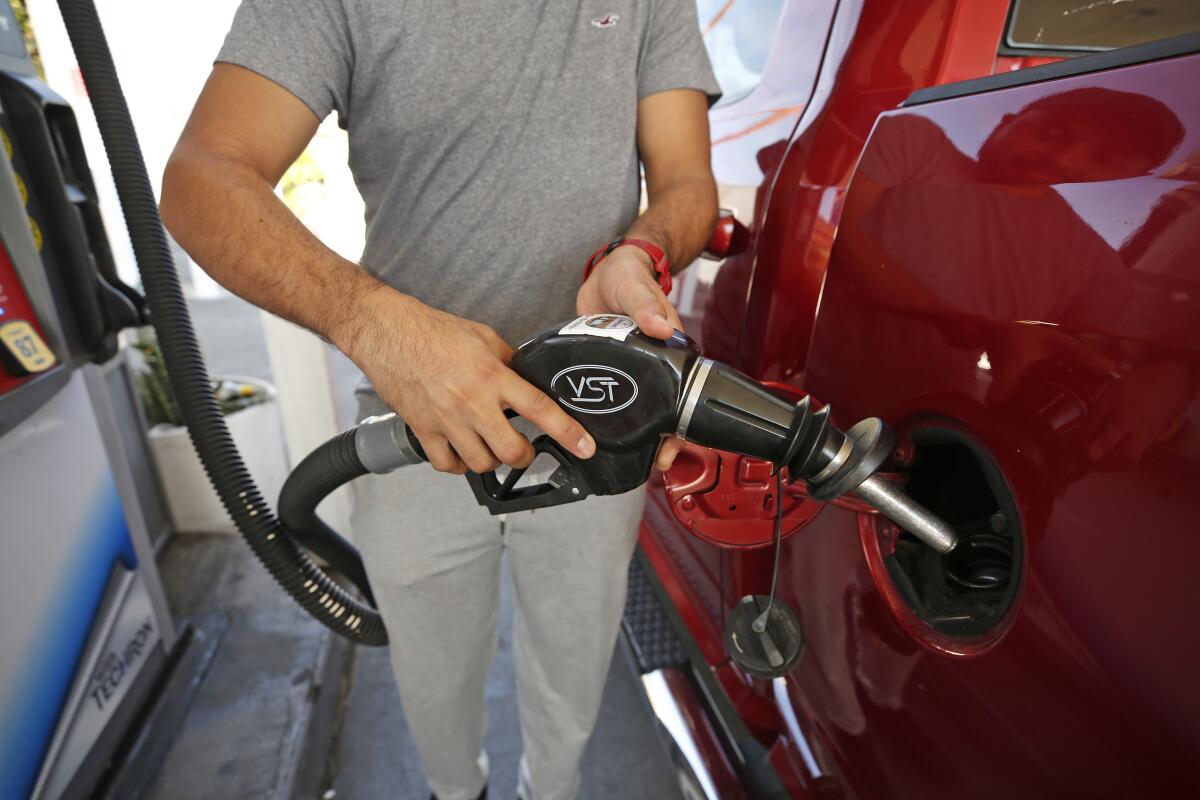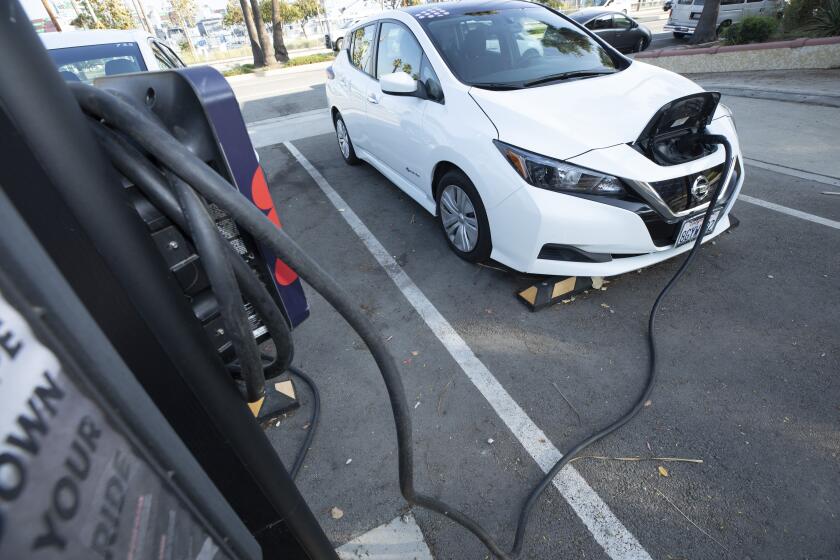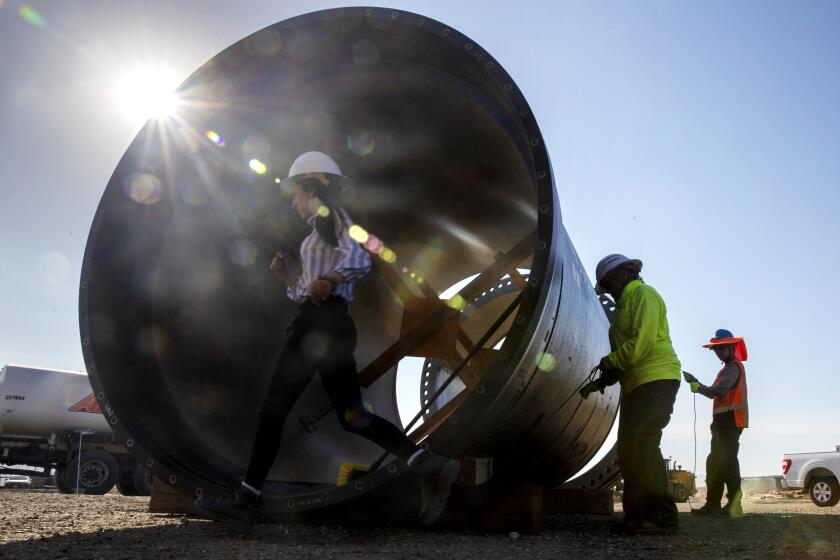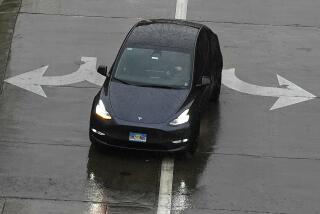California set to make history by banning sales of gas-powered cars

California air regulators are set to vote Thursday on a historic plan that would effectively require all new cars sold within the state to be zero-emission vehicles by 2035 — a ruling that would put the nation’s most populous state in the forefront of phasing out internal combustion engines and the harmful, planet-warming gasses they emit.
If approved, the regulations are expected to significantly reduce vehicle carbon dioxide emissions, as well as smog-forming nitrogen oxides over the next two decades. It could also lead the way in transforming America’s aging fleet of gasoline-powered automobiles.
“The climate crisis is solvable if we focus on the big, bold steps necessary to stem the tide of carbon pollution,” Gov. Gavin Newsom said Wednesday. “California now has a groundbreaking, world-leading plan to achieve 100% zero-emission vehicle sales by 2035. It’s ambitious, it’s innovative, it’s the action we must take if we’re serious about leaving this planet better off for future generations.”
The proposed rules would establish a credit system for automakers supplying California car dealerships and take effect in 2026. In that year, 35% of all new cars an auto manufacturer sells to California dealerships would need to be either zero-emission, plug-in hybrid or hydrogen-powered vehicles. That would increase to 68% in 2030 and 100% by 2035.
Hoping to ban sales of new internal combustion vehicles by 2035, the California Air Resources Board proposes requiring that EV sales triple by 2026.
If carmakers failed to meet the mandated percentages, they would be required to obtain credits from another manufacturer that had exceeded that quota. The state could also penalize automakers that fail to meet the targets, fining them roughly $20,000 for every vehicle short of their target in a given year.
In the two years since Newsom signed an executive order directing the California Air Resources Board to plan the phasing out of new gas-powered vehicle sales, the board has avoided calling the directive a “ban.”
“Some new gas-powered vehicles will still be allowed to be sold, but they must be plug-in hybrids,” the board states on its website. Those so-called PHEVs, however, must be able to run at least 50 miles on batteries before switching to gas.
According to air quality officials, the new regulations would reduce greenhouse gas emissions from cars by more than 50% in 2040, compared with if no action were taken. Tailpipe emissions are the leading contributor of carbon dioxide in California and accounted for about 40% of the state’s greenhouse gas emissions in 2019.
Additionally, state officials say the plan would cut smog-forming nitrogen oxides by more than 25% in 2037. They estimate the rule will result in over 1,400 fewer deaths from heart disease, and help Californians avoid more than 700 emergency room visits for asthma between 2026 and 2040.
Although the rule could possibly signal the demise of gas-powered cars, some environmental organizations say the interim targets aren’t ambitious enough.
A nuclear conflict involving less than 3% of the world’s stockpiles could kill a third of the world’s population within two years, researchers say.
Regina Hsu, a senior associate attorney for Earthjustice, said several countries have more ambitious targets, including Norway, which plans to phase out new gas cars by 2025, and the Netherlands, which is aiming for all zero-emission vehicles by 2030. In the U.S., Washington Gov. Jay Inslee has set a goal to phase out new gas cars in the state by 2030 (though it is nonbinding commitment).
“The ramp that we see is not as stringent as it could be,” Hsu said. “We think that [the air resources board] has sort of missed an opportunity here to be more ambitious. And this rule will be leaving clean air and climate benefits on the table.
“Based on automaker projections, this rule is not that ambitious,” Hsu said. “We think it sort of tracks what automakers were planning to do and it doesn’t have that regulatory mechanisms that will push them to do more — especially in a state like California, where we have regions with the worst air quality in the country.”
Hsu also said more needs to be done to help working-class families purchase zero-emission vehicles, noting that the state’s median individual income is $41,000.
California holds the distinction as the only state that can regulate cars, because of a provision in the Clean Air Act that allows it to seek a waiver from federal rules. Other states can follow California’s more stringent standards, including the zero-emission targets that will be voted on this week.
Today, California is home to about 43% of all electric vehicles nationwide. In 2021, about 12% of new vehicle sales were zero-emission or plug-in hybrid vehicles.
Southern California’s water district installs a quake-resistant pipe along the Colorado River Aqueduct to prevent a major spill.
Brian Maas, president of the California New Car Dealers Assn., which represents more than 1,200 franchised new car and truck dealer members, said the organization is “all-in” on the transition to zero-emission vehicles.
However, the organization has a number of concerns about how this transition to 100% zero-emission vehicles will look.
In public comments to state officials, the group raised concerns about the stability of the supply chain, including the higher demand for raw materials (such as lithium used to make electric car batteries).
Dealers and consumers have seen the prices of new cars swell to historic highs, driven by rising inflation, a crippling semiconductor shortage and increased demand during the pandemic.
Affordability has been one of the largest obstacles to widespread adoption of electric vehicles. The average cost of new cars, Maas said, is over $45,000. For electric vehicles, which some argue have an outsize luxury catalog, the average cost is $66,000.
“Assuming this rule gets adopted, we are going to have to do what we can to help the manufacturers figure out how to drive the price of making these cars down,” Maas said. “Because if they’re not affordable to consumers, it’s going to delay the transformation to electrification.”
State officials believe the price of electric vehicles could reach parity with gas-powered cars by 2030.
However, Maas worries if that doesn’t happen, it could push consumers to continue to purchase used vehicles with gasoline engines, or new gas-powered vehicles out of state.
He argued the California Air Resources Board should establish a formal review period to assess the market conditions midway to the 2035 target.
“I think what we’re asking Californians to do — and the other states that follow California — is to change personal transportation in a way that hasn’t been changed since we went from horses to internal combustion engines,” Maas said.
“We’re going to have to change how we fuel these vehicles, from gas stations to chargers. We’re going to have to figure out how we fix these vehicles. How long do the batteries last? How are batteries recycled? So there are lots of questions related to this — all subsumed under the rather worthy goal of saying, ‘You know what? We need to convert to electrification because it’s better for our society.’ We’re all in for that. We just want to make sure that as we proceed along this path, we’re all working together to answer all these questions,” he said.










